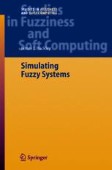Search
Search Results
-
Machine Shop I
The queuing system in this chapter is shown in Fig. 11.1. This application was adopted from a problem in ([1], p.594). We continue this problem in...
-
From Genetic Variation to Probabilistic Modeling
Genetic algorithms ⦓GAs) [53, 83] are stochastic optimization methods inspired by natural evolution and genetics. Over the last few decades, GAs have...
-
Inventory Control II
This chapter continues the inventory control problem studied in the previous chapter. The new system is shown in Fig. 17.1. We have added two things...
-
Project Network Model
The project network diagram is in Fig. 26.1. This problem is modelled after an example in [2]. The project consists of various jobs that must be...
-
Queuing II: No One-Step Calculations
In this chapter we will study the fuzzy system shown in Fig. 5.1 now reproduced as Fig. 9.1. This example was adapted from an example in [1]. The...
-
Modular Neural Networks
We describe in this chapter the basic concepts, theory and algorithms of modular and ensemble neural networks. We will also give particular attention...
-
Type-1 Fuzzy Logic
This chapter introduces the basic concepts, notation, and basic operations for the type-1 fuzzy sets that will be needed in the following chapters....
-
Human Recognition using Face, Fingerprint and Voice
We describe in this chapter a new approach for human recognition using as information the face, fingerprint, and voice of a person. We have described...
-

-

-

-

-
RTLinux-Based Controller for the SuperMARIO Mobile Robot
In the last years a new way to implement Real Time control systems has been opened, in connection with the diffusion of the open-source operating...
-
Vision Based Motion Planning of Humanoid Robots
Vision is the most effective sensing form for humans in understanding their environment, recognition of the objects around them and navigating from...
-
Evolution of Locomotion Controllers for Legged Robots
The construction of a locomotion controller for legged robots is a difficult and time consuming process. This task can be automated through the use...
-
Thresholding Segmentation and Classification in Automated Ultrasonic Testing Image of Electrical Contact
This paper is concerned with the thresholding segmentation of ultrasonic C-scan image for defect with artificial intelligence and support vector...
-
6 Conclusion
Controllable underactuated manipulators were successfully developed based on the nonlinear control theoretic approach. The nonholonomic gear is...
-
4 Design of the chained form manipulator
Nonholonomic underactuated systems are typically modelled as highly nonlinear ones, which becomes obvious as the dimension of the system increases....
-
Extremal Properties of Random Structures
The extremal characteristics of random structures, including trees, graphs, and networks, are discussed. A statistical physics approach is employed...
-
On the Analysis of Backtrack Proceduresfor the Colouring of Random Graphs
Backtrack search algorithms are procedures capable of deciding whether a decision problem has a solution or not through a sequence of trials and...
